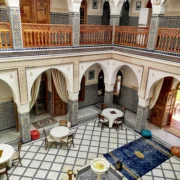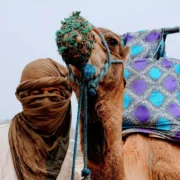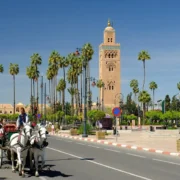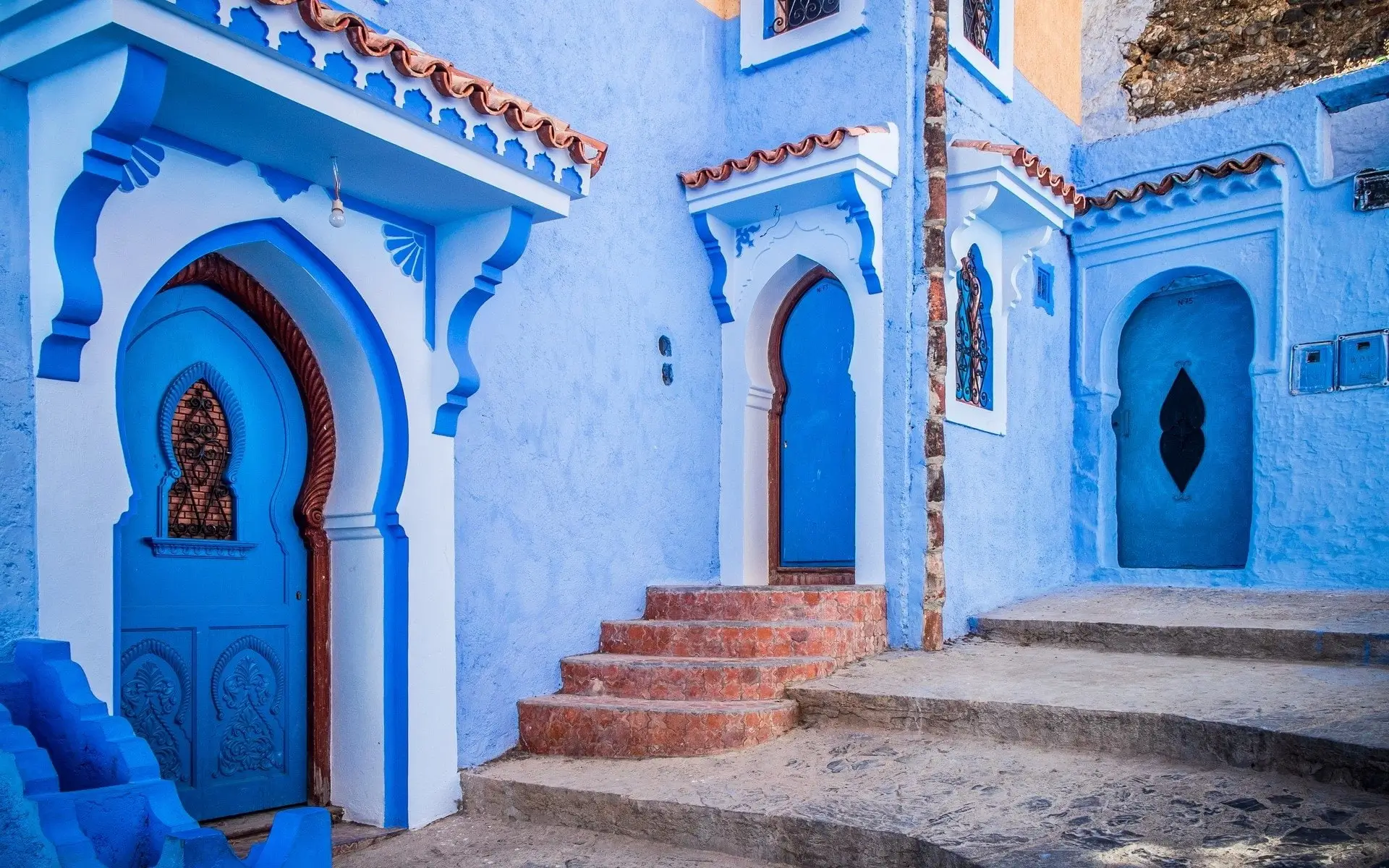
Discover the Enchanting Beauty of Chefchaouen Blue City
Table of Contents
ToggleImagine stepping into a dreamlike world where every wall, doorway, and alleyway is painted in shades of blue. That’s Chefchaouen blue city for you—a Moroccan gem nestled in the Rif Mountains, known as the “Blue City.” Whether you’re an art lover, a photography enthusiast, or just someone seeking tranquility, this place has something magical to offer. So, are you ready to dive into its vibrant charm?
Chefchaouen Blue City: Where History Meets Vibrant Blues
Let me set the scene for you. Picture yourself wandering through narrow cobblestone streets, surrounded by buildings that shimmer with hues of azure, cobalt, and turquoise. It’s like walking inside a painting! But what makes Chefchaouen so special isn’t just its stunning aesthetics—it’s also the rich history and culture that breathe life into this enchanting town.
Chefchaouen was founded in 1471 by Moulay Ali Ben Rachid, who sought refuge here after fleeing persecution during the Reconquista in Spain. Over time, it became a haven for Jews and Muslims escaping religious turmoil. The tradition of painting the walls blue began centuries ago when Jewish refugees arrived, believing the color symbolized heaven and spirituality. And guess what? This tradition lives on today!
“In Chefchaouen, every corner tells a story—and each shade of blue whispers secrets from the past.”
A Brief History of Chefchaouen
To truly appreciate Chefchaouen, we need to go back in time. Back then, the region was part of the Marinid dynasty, which ruled much of northern Morocco. When the Spanish Inquisition forced many Jews and Moors out of Iberia, they found solace in this remote mountain town. These newcomers brought their traditions, skills, and yes, their love for the color blue.
Fast forward to modern times, and Chefchaouen remains a testament to its multicultural heritage. You’ll notice influences of Berber, Arab, and European cultures woven seamlessly into daily life. For instance, the local dialect spoken here is a mix of Arabic and Spanish—a fascinating reminder of its complex past.
Why Is Chefchaouen Called the “Blue City”?
Now, let’s talk about the big question: why all the blue? There are several theories floating around, but most locals will tell you it’s rooted in spirituality. Blue is said to represent the sky and water—two elements considered sacred in both Judaism and Islam. By painting their homes blue, residents believed they could ward off evil spirits while staying connected to divine forces.
But there’s another practical reason too. In hot climates like Morocco, light colors reflect sunlight better, keeping interiors cooler. Smart, right? Plus, the blue tones create a calming effect, making the bustling medina feel serene even during peak tourist season.
Exploring the Iconic Landmarks of Chefchaouen
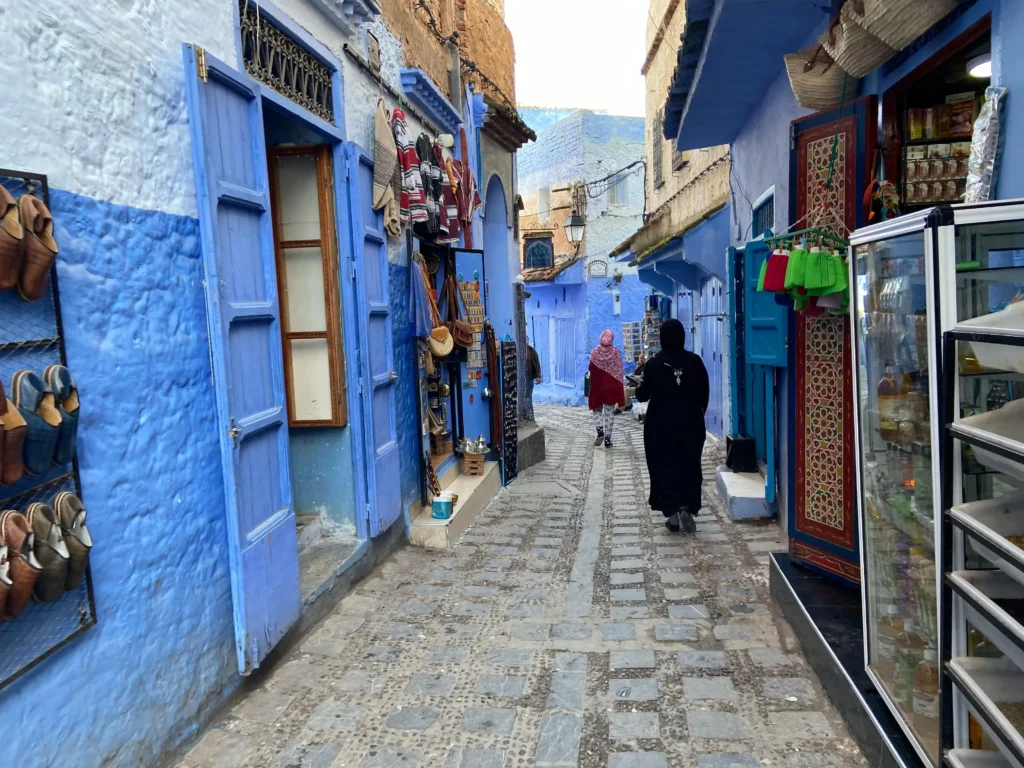
Once you arrive in Chefchaouen, your eyes won’t know where to look first. From towering landmarks to hidden gems, this city offers endless opportunities for discovery. Let’s take a closer look at some must-visit spots.
The Majestic Medina: A Maze of Blue Alleys
The heart of Chefchaouen lies in its medina, a UNESCO World Heritage Site waiting to be explored. As you wander through these labyrinthine streets, you’ll encounter shops selling everything from handwoven rugs to freshly baked baguettes. Each turn reveals a new surprise—a flowerpot overflowing with bougainvillea, a friendly cat lounging on a windowsill, or a street artist sketching portraits.
Pro tip: Don’t rush! Take your time soaking in the atmosphere. Stop to chat with shopkeepers or sip mint tea at one of the cozy cafes. Trust me; the memories will last a lifetime.
Ras El Ma Spring: Nature’s Gift in Chefchaouen
Just outside the medina lies Ras El Ma Spring, a natural wonder that supplies the entire town with fresh water. Locals believe this spring holds mystical powers, and it’s easy to see why. Surrounded by lush greenery and cascading waterfalls, it feels like stepping into a postcard.
If you’re feeling adventurous, follow the path leading uphill for breathtaking views of the valley below. Just remember to wear sturdy shoes—the trails can get slippery!
Grand Mosque: A Spiritual Hub Amidst the Blue Walls
No visit to Chefchaouen would be complete without stopping by the Grand Mosque. While non-Muslims aren’t allowed inside, the exterior alone is worth admiring. Its minaret stands tall against the backdrop of blue houses, creating a striking contrast between earthy tones and vibrant colors.
As you stand nearby, listen closely. You might hear the call to prayer echoing across the hills—a sound that connects people across generations and faiths.
Unveiling the Culture and Traditions of Chefchaouen
Chefchaouen isn’t just a pretty face—it’s a place where culture and tradition run deep. From artisanal crafts to mouthwatering cuisine, this city offers a glimpse into the soul of Morocco.
Traditional Crafts: Handmade Treasures from the Blue City
One of the highlights of visiting Chefchaouen is exploring its vibrant craft scene. Whether you’re looking for handmade pottery, intricately woven blankets, or beautifully carved wooden items, the medina has it all. Each piece tells a story of craftsmanship passed down through generations.
For instance, did you know that wool weaving is a staple industry here? Local artisans use traditional looms to create stunning rugs and shawls. These textiles often feature geometric patterns inspired by Berber designs, making them perfect souvenirs to take home.
“Buying local not only supports the community but also ensures you leave with a piece of Chefchaouen’s heart.”
If you’re interested in learning more about these crafts, consider booking a workshop or visiting one of the cooperatives. It’s an immersive experience that lets you see firsthand how these treasures are made.
Local Cuisine: Savoring Authentic Moroccan Delights
Speaking of traditions, let’s talk food! Moroccan cuisine is renowned worldwide, and Chefchaouen serves up some of the best dishes around. Start your day with freshly baked bread dipped in olive oil—a staple breakfast item here. For lunch, try tagine, a slow-cooked stew prepared in a conical clay pot. And don’t forget to pair it with mint tea, the national drink of Morocco.
A personal favorite of mine is sardines—yes, sardines! Chefchaouen is close to the Mediterranean coast, so seafood lovers will be delighted by the fresh catch available at local markets. Many restaurants serve sardines grilled with lemon and spices, creating a simple yet unforgettable dish.
Festivals and Celebrations: Experiencing Life in Chefchaouen
To fully embrace the spirit of Chefchaouen, plan your visit during one of its many festivals. One of the most popular events is the Annual Music Festival, which celebrates traditional Andalusian music. Imagine sitting under starlit skies, surrounded by locals clapping along to soulful melodies. It’s an experience like no other!
Another highlight is the Ramadan period, when the entire town comes alive with lanterns and communal feasts. Even if you’re not fasting, you’ll feel welcomed as part of the celebration. Just remember to respect local customs and dress modestly during this time.
How to Get to Chefchaouen
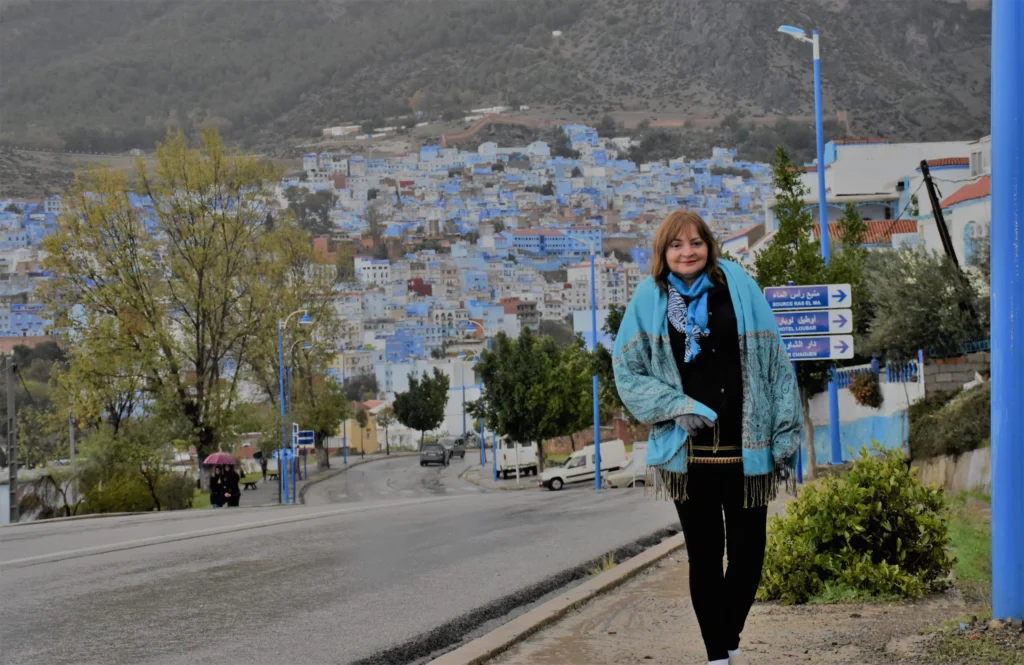
Now that you’re eager to explore Chefchaouen, let’s talk logistics. Depending on where you’re starting your journey, there are several ways to reach this picturesque town. Here’s a breakdown of routes from major Moroccan cities:
From Marrakech: A Scenic Journey to the Blue City
Traveling from Marrakech to Chefchaouen takes approximately 7-8 hours by bus or private car. The route winds through the breathtaking Atlas Mountains, offering panoramic views of snow-capped peaks and lush valleys. If you prefer comfort, consider hiring a driver who can tailor the trip according to your schedule.
For those on a budget, CTM buses provide reliable service between the two cities. However, keep in mind that this option requires multiple transfers and may test your patience.
From Fez: Easy Access via Road or Train
Fez, being closer to Chefchaouen, makes for a convenient starting point. The drive typically lasts around 4-5 hours, depending on traffic conditions. Alternatively, you can take a train to Tangier and then switch to a shared taxi (grand taxi) for the final leg of the journey.
This route is ideal for history buffs, as it passes through ancient Roman ruins and charming villages along the way.
From Tangier: Coastal Charm Leading to Mountain Beauty
Tangier is another gateway to Chefchaouen, especially for travelers arriving from Europe. From here, the journey takes roughly 2-3 hours by car or grand taxi. Along the way, enjoy sweeping views of the Strait of Gibraltar and rolling hills dotted with olive groves.
Pro tip: Stop at the nearby village of Martil for a quick swim before continuing onward. It’s a refreshing break before tackling the mountain roads.
From Casablanca: Combining Urban Exploration with Rural Serenity
Casablanca might seem far from Chefchaouen, but the distance (about 6-7 hours) is manageable with proper planning. Take a morning flight to Fez or Tangier, then proceed to Chefchaouen by road. This approach allows you to combine urban adventures with rural charm.
Alternatively, opt for an overnight train ride from Casablanca to Fez, ensuring you arrive well-rested and ready to explore.
From Rabat: A Short Escape into Nature and Color
Rabat residents have it easy when it comes to visiting Chefchaouen. The journey spans just 4-5 hours by car or bus, making it an excellent weekend getaway destination. Plus, the coastal drive provides stunning ocean views, adding extra appeal to the trip.
Consider renting a car if you want flexibility in exploring nearby attractions, such as the ancient ruins of Lixus.
Tips for Visiting Chefchaouen
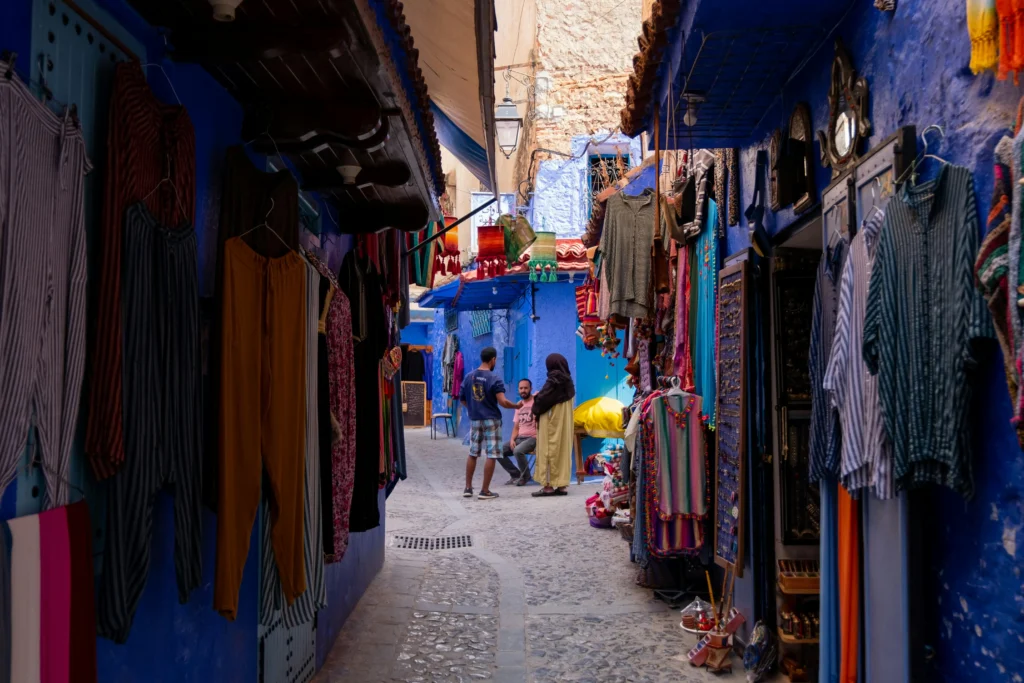
Before packing your bags, here are a few practical tips to ensure a smooth and enjoyable visit:
Best Time to Visit Chefchaouen
The ideal months to visit Chefchaouen are spring (March-May) and autumn (September-November). During these seasons, temperatures remain mild, and the surrounding landscapes burst with color. Summer can get quite hot, while winter brings chilly winds and occasional rain.
How to Get Around the Blue City
Once in Chefchaouen, getting around is straightforward thanks to its compact size. Most attractions are within walking distance, allowing you to soak in the atmosphere at your own pace. For longer excursions, hire a guide or rent a scooter—just be prepared for narrow streets!
Must-Have Items for Your Chefchaouen Adventure
Pack light but smart for your trip. Essentials include:
- Comfortable walking shoes
- Layers for changing weather
- Sunscreen and sunglasses
- Reusable water bottle
- Camera or smartphone for capturing memories
And don’t forget to bring cash! While larger establishments accept cards, smaller shops and street vendors rely on good old-fashioned dirhams.
Capturing the Magic: Photography Opportunities in Chefchaouen
If you’re a photography enthusiast, Chefchaouen is your dream come true. This city is literally a living canvas, with every corner offering a picturesque moment waiting to be captured. Whether you’re shooting with a professional camera or simply using your smartphone, here are some tips to help you make the most of it.
Finding Perfect Angles in the Narrow Streets
The medina’s narrow alleys are a photographer’s paradise. Look for patterns in the blue walls, play with shadows cast by the sun, and experiment with reflections in puddles after rainfall. Don’t forget to include the vibrant flowerpots that adorn doorways—they add a pop of color against the serene blues.
Pro tip: Visit early in the morning or late afternoon when the light is soft and golden. These “golden hours” create stunning contrasts and enhance the natural beauty of the surroundings.
Sunrise and Sunset Views: Golden Hours in the Blue City
For breathtaking views, head to one of Chefchaouen’s many viewpoints. The Spanish Mosque offers panoramic vistas of the town below, especially enchanting during sunrise or sunset. As the sky transitions from pink to orange, the blue houses seem to glow, creating an almost surreal atmosphere.
Another great spot is Outa El Hammam Square, where locals gather in the evenings. Capture candid shots of children playing, vendors setting up stalls, and elderly men sharing stories over cups of tea.
FAQs About Chefchaouen
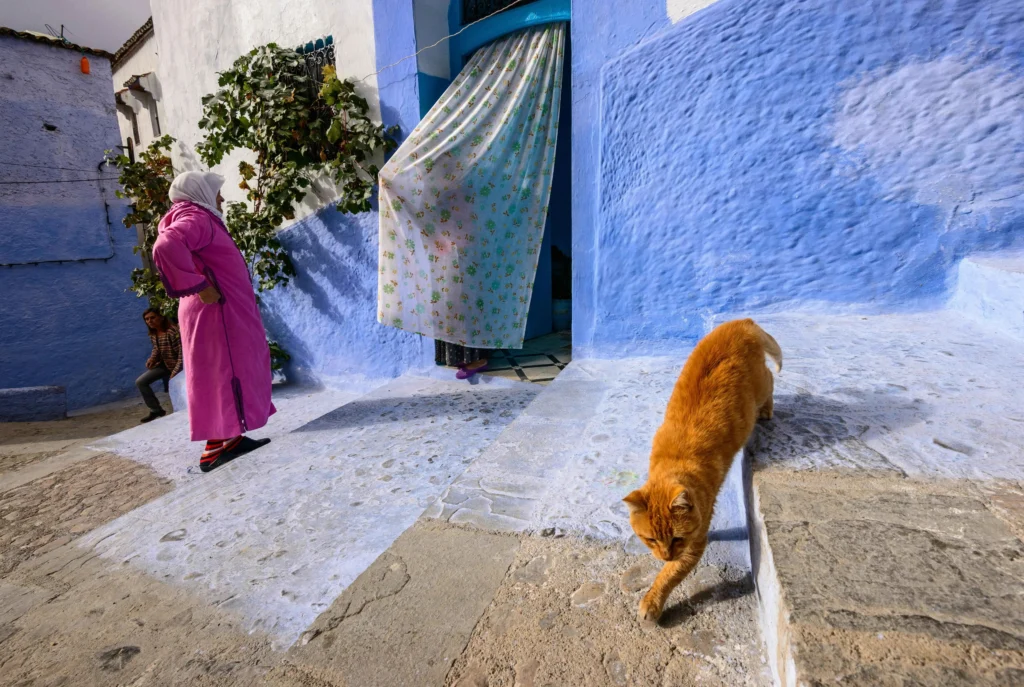
Before wrapping up, let’s address some common questions travelers often ask about visiting Chefchaouen. These quick answers should clear any doubts and help you plan your trip better.
Q1: What Makes Chefchaouen Unique Among Other Moroccan Cities?
Chefchaouen stands out because of its distinctive blue-painted buildings, which reflect both cultural significance and environmental practicality. While other cities in Morocco boast impressive architecture and history, none quite match the whimsical charm of this mountain town.
Q2: Do I Need a Guide to Explore Chefchaouen?
Not necessarily, but having a guide can enrich your experience. A knowledgeable local can share fascinating stories about the town’s history, point out hidden gems, and ensure you don’t miss anything important. If you prefer exploring independently, maps and apps like Google Maps work well within the medina.
Q3: Is Chefchaouen Safe for Tourists?
Absolutely! Chefchaouen is known for its friendly residents and low crime rates. That said, always exercise basic precautions, such as keeping valuables secure and avoiding poorly lit areas at night. Women traveling alone may attract attention, so dressing modestly helps blend in with local customs.
Q4: Can I Stay Overnight in Chefchaouen?
Yes, absolutely! In fact, staying overnight allows you to fully immerse yourself in the town’s charm. From budget-friendly guesthouses to luxury riads, there’s no shortage of accommodation options. Plus, waking up to the sight of blue rooftops bathed in sunlight is an experience worth savoring.
Final Thoughts: Why Chefchaouen Should Be on Every Traveler’s Bucket List
By now, I hope you’re convinced that Chefchaouen deserves a spot on your travel itinerary. It’s not just another tourist destination—it’s a place that touches your soul with its beauty, warmth, and authenticity. From its rich history to its vibrant culture, this Blue City has something special to offer everyone.
“In Chefchaouen, time slows down, allowing you to breathe deeply and connect with the world around you.”
Book a Tour with Us
If you’re planning a trip to Morocco, consider reaching out to Morocco Joy Tours for expert guidance. Their tailored packages ensure you make the most of your journey, whether you’re exploring Chefchaouen or venturing into other parts of this incredible country.
So pack your bags, grab your camera, and get ready to fall in love with the Blue City. Trust me—you won’t regret it!


